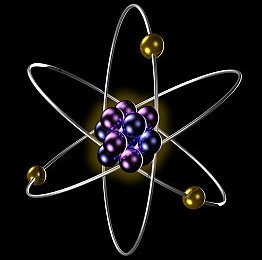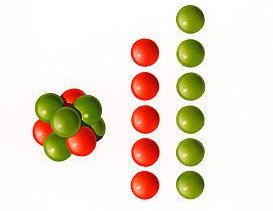Fusion Glossary
Explanation Of Common Terms
This fusion glossary defines some of the terms used in this general section and in other references that you may find relating to fusion.
alpha particle - nucleus of the helium atom composed of two neutrons and two protons

aneutronic - A fusion reaction producing little or no neutrons, increasing the safety profile and lessened shielding requirements
boron - fifth element in periodic table - will usefully produce alpha particles when bombarded with a proton
Bremsstrahling in Fusion Glossary
bremsstrahlung cooling - loss of plasma energy (with temperature fall) through electromagnetic radiation, like x-rays, produced by electrons and ions as they are deflected by other nearby atomic particles, slowing their velocity.
cold fusion - the apparent production of power from material at room or other cool temperatures claimed to be a fusion process
collider - an apparatus to accelerate ions and other particles to study or utilise the effects of high-energy collisions

tritium - hydrogen isotope with one proton and two neutrons in nucleus
dense plasma fusion - see dpf - fusion using heavier particles - frequently boron with protons
dpf - dense plasma fusion - used to denote boron and hydrogen fusion reactions especially that undertaken by Lawrenceville Plasma Physics, creating mainly alpha particles
deuterium - hydrogen isotope with one proton and one neutron in nucleus
deuteron - nucleus of deuterium atom
electrons - negatively charged, low mass particles that orbit the positively charged atom nucleus
electron-volts eV - measure of energy based on accelerating an electron through one volt. In plasma physics it can give temperature of a plasma in Kelvin by dividing value by the Boltzman constant.
helium - second element in periodic table, inert gas, known as alpha particle for it nucleus - product of a number of fusion reactions
Inertial Confinement
inertial confinement - a method of studying and utilising plasmas in collision-types reactions such as in the NIF project.
ionised - molecules and atoms separated from some or all of their circulating electrons
ions - atoms or molecules with a differing number of electrons compared to nuclear protons, creating a charged particle
isotopes - variations in the nucleus of atoms, having the same number of protons and varying numbers of neutrons
iter - international thermonuclear experimental reactor - being built in southern France
kilovolts - one thousand volts
lithium - third element in periodic table - used in liquid form to contain magnetically confined deuterium-tritium fusion, generating more tritium as the produced neutrons interact with it
Magnetic Confinement
magnetic confinement - a method of controlling plasmas and fusion reactions utilising magnetic fields - electromagnetic and other - to contain otherwise very hot and unstable material as with the Tokamak and the stellarator.

neutrons - neutrally charged nuclear atomic particles felt to be composed of quarks - uud
pinch effect - collapsing or indrawing of electric fields in a plasma or similar current carrying material which can create a more intense plasma reaction
plasma - the fourth state of matter where with heat causes molecules to separate into individual atoms and, separating from some electrons, become charged particles allowing magnetic fields and electrical currents to be conducted through and influence it

plasma physics - study of the properties of plasma. Can involve astrophysics or laboratory studies
protons - positively charged nuclear atomic particles felt to be composed of quarks - udd
Quarks ......
quarks - basic unit of atomic nuclear particles - several types demonstrated, but for the regular matter we are using in fusion two basic ones: u - up quark with charge of +2/3e and d - down quark with charge of -1/3e. Applications of this can be seen in the Australian Star Scientific and Japanese muon research process.
More fusion glossary terms will be added from time to time as found necessary and useful.
New! Comments
Have your say about what you just read! Leave me a comment in the box below.